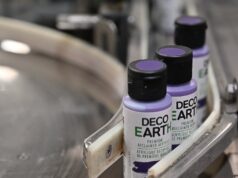View PDF Ace November 20, 2008
Tsuga: Hemlock for the Holidays
BY KIM THOMAS
Forester Merill Flanary takes hemlock seriously. Flanary is co-founder of Save Kentucky’s Hemlocks, a grassroots partnership of citizens, non-profits and government agencies working together to save eastern hemlocks in an effort to combat the newly established non-native insect, Hemlock Woolly Adelgid, which is expected to kill 90 percent of Kentucky’s eastern hemlocks, also known as Tsuga, in the next few years. The Tsuga is a fir tree called “hemlock” due to the similarity in its smell to the leaves of the historical and infamously poisonous plant. Flanary is eager to spread the word that these conifers are a much more integral part of Kentucky’s eco-system than one might think. In the spirit of community awareness and in celebration of eastern hemlocks, she and fellow forester Greg Abernathy organized the Tsuga Art & Music Event, sponsored by Save Kentucky’s Hemlocks, to be held this Friday at Old Tarr Distillery.
The presentation is an effort to raise awareness of the threat posed to the Tsuga, and will raise funds to purchase chemical for treatment of eastern hemlocks throughout the state of Kentucky. The occasion Friday will begin with a group art show, with original paintings, reduction prints, wood block prints, stained glass, sculptures, from a diverse group of artists. Some of the artists are attempting to incorporate hemlock wood into their art pieces. Event organizer and promoter Greg Abernathy works as a GIS Specialist/cartographer/graphic designer for the Kentucky State Nature Preserves Commission. He has a background in forest ecology with a “lifetime love of art which results in my
works blending in some natural world component.“ When Greg became involved working with Save Kentucky’s Hemlocks earlier this year, he pitched the idea of hosting an art show to the group. “Ideas had already been circulating about doing a music event but we were uncertain there was a space in downtown Lexington that would accommodate both. I searched around town and ultimately got in touch with an old friend of mine Barry McNees, owner of Old Tarr Distillery, and he was very supportive of having the event there.
Tsuga Art and Music evolved. I organized a group of 26 artists mainly from Lexington though there are a handful of out-of-town artists (Chicago, New York City, etc.) —they were given information on the hemlock issue and offered salvaged hemlock barn siding to use in their pieces (Many Moons Design donated this), but there was no requirement that the piece be hemlock themed. The result will be a wide range of media including paintings, woodcuts, screen prints, stained glass and even film. The art that I have seen thus far has been amazing.”
Artist James Shambhu (graphic designer for the Kentucky Horse Park) says, “I was not familiar with the kind of wood Hemlock was and my idea for the show changed many times. I really wanted to use the wood itself as inspiration for the work. I went down to Many Moons Design to see Tommy Whitaker who had just salvaged some barn siding that was made from the Hemlock tree. I used the wood exactly as it was found, it had a natural landscape in it due to the color and treatment of the siding.”
As a Forester who works for Kentucky Natural Lands Trust, Flanary is also caretaker of Blanton Forest State Nature Preserve, Kentucky’s largest tract of old growth forest— over 3,000 acres. She advises, “Blanton has vast acreages of eastern hemlock forests, and most of these hemlocks are four feet in diameter and tower over the headwater streams that make up Blanton.”
Asked how the invasive insect got here and its ramifications, Flanary explains, “Hemlock Woolly Adelgid (HWA) is an insect species similar to an aphid from Japan. It was introduced to the western United States in the 1930s on nursery stock from Asia. It went undetected in western states because western hemlocks have natural resistance and there are native predatory beetles that kept populations at a minimum.
In 1951, HWAwas first detected in Richmond, Virginia. Since there are no known natural predators in this region, and hemlocks in the east have little resistance, HWA has been killing the eastern hemlock (Tsuga Canadensis) and Carolina hemlock (Tsuga carolinia) at alarming rates. States such as Virginia, Connecticut, New Jersey, and North Carolina have reported devastating mortality rates between 42 and 90 percent of hemlock species. HWAwas first detected in Kentucky in April 2006 in Harlan County. Spread by birds, wind, wildlife, and humans, HWA has now spread to five neighboring counties and is expected to cause widespread
mortality in the next two to seven years….”
Flanary believes that all of the impacts from the loss of hemlocks in Kentucky’s forests can’t even be foreseen at this time. She warns that, with their decline, “changes in the forest structure from the canopy to the forest floor will become apparent. Increased sunlight will raise soil and water temperatures; decreases in soil moisture and available water flow in summer months will take a toll on the plants and animals that have evolved with the dense hemlock cover…No other species can replace the hemlock tree and assume its ecological role.”
Why we want to save hemlock trees Flanary explains, “Eastern hemlock is the dominant tree species in southeastern Kentucky’s deep ravines and mountain stream sides. It is also commonly found along moist cliff line habitat throughout eastern Kentucky. Isolated populations occur west of Elizabethtown in Hardin County and in the Green River valley around Mammoth Cave National Park. Hemlocks are long-lived, slow growing, and the most shade tolerant evergreen tree species in our forests.
The loss of the eastern hemlock will significantly alter how light and energy enter the ecosystem, meaning a change in the nutrient cycle, the hydrological cycle, decomposition rates, carbon storage and the ecological interactions that will play out at multiple levels within the ecosystem for centuries.” Abernathy says, “I have been very interested in pushing the idea of Support Art! Support Conservation! My thought was not to ask artists to donate works of art, but rather have them donate a small portion to the cause. The hope is that their art work, along with the bands playing that night, will draw a lot of people out and make them aware of the situations facing eastern hemlocks trees.“
Abernathy says, “I hope everyone who comes down will walk away with something new— knowledge of the hemlock issue and interests in getting involved, discovery of an artist they were unaware of or a new favorite band that they had never heard before.”
He concludes, “The timing of Tsuga is such that it falls on Gallery Hop which was intentional— we hope to get some traffic from the gallery hoppers. By chance we are kicking off an amazing weekend of art and music in Lexington. Saturday night (Nov. 22) at Arts Place from 7-9pm is the reception for Pet Milk, a collaboration of over 75 writers, artist and musicians organized by Kelli Burton. Several artists from Tsuga and Andrew English of Englishman have also participated in this creative endeavor. So sleep in late after Tsuga and head out Saturday night for another full evening of music and fun!” ■
The Benefit is Friday, Nov. 21st, 2008 Old Tarr Distillery, Manchester St. Free Group Art Show 5pm-9pm; but the Music @ 8pm requires a ticket. All Ages Show. Andrew English will be playing a solo set during the art show (26 artists participating), followed by three bands, including music from The Swells and Englishman. Info, www.kyhemlocks.org/tsuga_event.html







